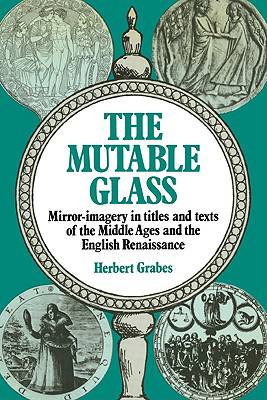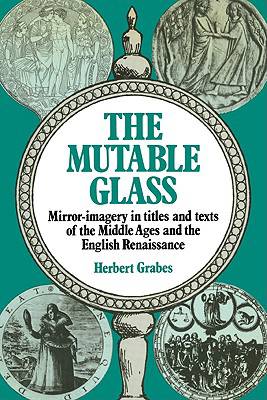
Door een staking bij bpost kan je online bestelling op dit moment iets langer onderweg zijn dan voorzien. Dringend iets nodig? Onze winkels ontvangen jou met open armen!
- Afhalen na 1 uur in een winkel met voorraad
- Gratis thuislevering in België vanaf € 30
- Ruim aanbod met 7 miljoen producten
Door een staking bij bpost kan je online bestelling op dit moment iets langer onderweg zijn dan voorzien. Dringend iets nodig? Onze winkels ontvangen jou met open armen!
- Afhalen na 1 uur in een winkel met voorraad
- Gratis thuislevering in België vanaf € 30
- Ruim aanbod met 7 miljoen producten
Zoeken
The Mutable Glass
Mirror-Imagery in Titles and Texts of the Middle Ages and English Renaissance
Herbert Grabes
Paperback | Engels
€ 86,45
+ 172 punten
Uitvoering
Omschrijving
This 1982 book was the first major and comprehensive survey of mirror-imagery to be found in medieval book-titles and English literature from the thirteenth to the end of the seventeenth century. Working within the tradition of the historical study of metaphor as developed by E. R. Curtius, Professor Grabes not only traces the shifting historical usages of the mirror (as the metaphor's 'vehicle') but also studies the metaphor's structural function in individual works. At the same time, the author addresses himself to the aesthetic problem of originality in literature, and, by investigating the function of a metaphor central to literature over a long period of time, he reveals the interplay between cultural history, the changing attitude towards life and the world, and literary imagination. It represents a substantial contribution to the history of ideas and to the study of iconography, which, by providing a systematic and historical contextualisation of the many varied metaphorical senses of the mirror, will be of particular value to art and literary historians, and cultural philosophers.
Specificaties
Betrokkenen
- Auteur(s):
- Uitgeverij:
Inhoud
- Aantal bladzijden:
- 432
- Taal:
- Engels
Eigenschappen
- Productcode (EAN):
- 9780521129923
- Verschijningsdatum:
- 4/02/2010
- Uitvoering:
- Paperback
- Formaat:
- Trade paperback (VS)
- Afmetingen:
- 170 mm x 244 mm
- Gewicht:
- 684 g

Alleen bij Standaard Boekhandel
+ 172 punten op je klantenkaart van Standaard Boekhandel
Beoordelingen
We publiceren alleen reviews die voldoen aan de voorwaarden voor reviews. Bekijk onze voorwaarden voor reviews.











